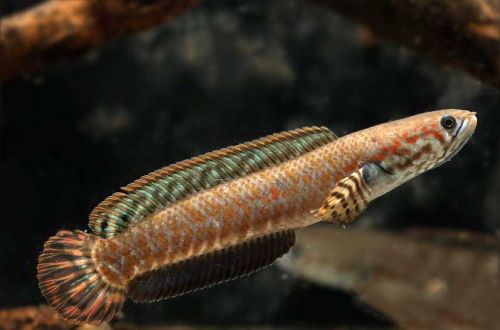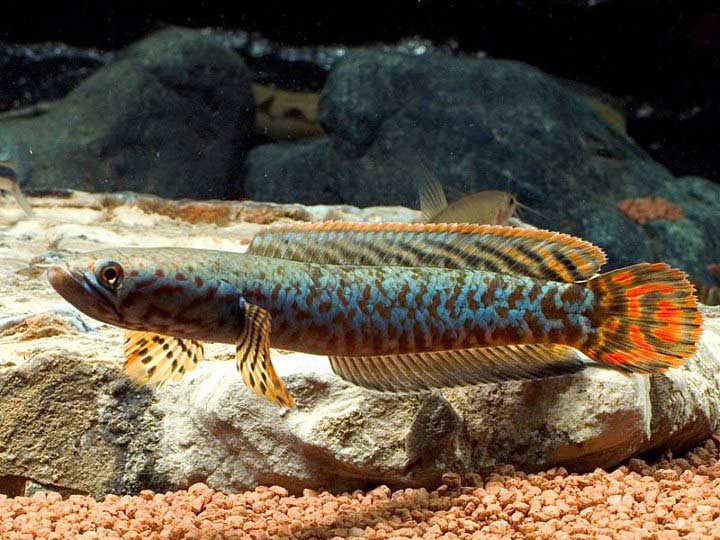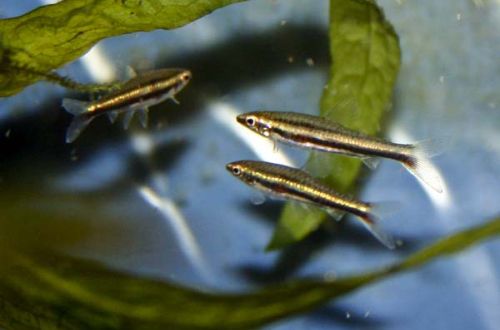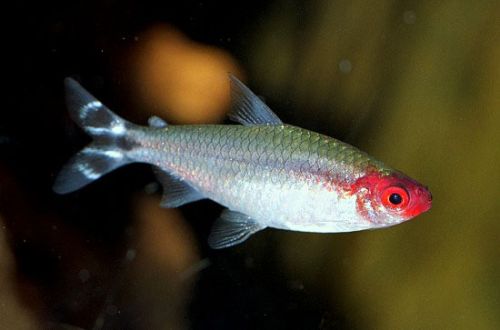
rainbow snakehead
The rainbow snakehead, scientific name Channa bleheri, belongs to the family Channidae (Snakeheads). The fish is native to Asia. Presumably, the natural distribution area is limited to a section of the Brahmaputra river basin in the Indian states of Assam and Arunachal Pradesh.

The habitat is characterized by heavy rainfall during the monsoon period, which is replaced by a relatively dry period, when the level of water bodies drops and dries up in places. The snakehead lives in swampy areas of rivers flowing under the canopy of tropical rainforests.
When the reservoir becomes very shallow, the fish hide in deep burrows filled with water or liquid mud. Sometimes, burrows reach a length of more than a hundred meters and always remain wet in the very depths.
Description
Adults reach a length of 14–17 cm. Fish have an elongated body typical of this genus, resembling eels, and a large head with a large mouth. When viewed from above, it has a morphological resemblance to snakes.

Wild populations vary somewhat in color. There are specimens with a predominance of blue, reddish, brown shades. These colors can be in the form of numerous specks on a darker background, or the main color with monochromatic specks of a different color.
In the course of evolution, snakeheads developed an additional respiratory organ that allows them to capture atmospheric air. Thanks to him, fish are able to stay in oxygen-poor water bodies for a long time, as well as in seines.
Behavior and Compatibility
Young Rainbow Snakeheads are quite peaceful and can be in a group. However, as they grow older and reach sexual maturity, the fish begin to show aggression towards their relatives. If a male / female pair is formed, then they usually get along with each other.
Due to its modest size, this species can be kept with other calm fish of a size large enough not to be eaten. It is advisable to select from among the species that live in the water column or near the surface and, accordingly, avoid the inhabitants of the bottom layer, for example, catfish, chars and others.
Brief information:
- The volume of the aquarium – from 100 liters.
- Water and air temperature – 14-28°C
- Value pH — 6.0–8.0
- Water hardness – 3–20 dGH
- Substrate type – any soft dark
- Lighting – subdued
- Brackish water – no
- Water movement – little or no
- The size of the fish is 14–17 cm.
- Nutrition – live or fresh/frozen food
- Temperament – can be aggressive, quarrelsome
- Keeping alone or in a formed pair
Maintenance and care, arrangement of the aquarium
The optimal size of the aquarium for one or two fish starts from 100 liters. The height of the tank is not significant, provided that the depth is at least 30 cm.
The rainbow snakehead prefers a dimly lit aquarium with a layer of floating plants and various hiding places on the bottom. As the latter, it is permissible to use both artificial design elements and natural ones, for example, heaps of stones, driftwood.
The tank must be covered with a tight lid, since snakeheads tend to leave (creep out) from it.
Unpretentious, perfectly adapts to various conditions of detention. The only thing you need to pay attention to is temperature fluctuations, which mimic natural seasonal changes during the winter and summer months.
In the cold season, it is recommended to turn off the aquarium heater so that the water reaches room temperature – a comfortable value of about 20°C. In the summer months, the water temperature must be maintained near the maximum allowable values - about 27–28 ° C.
Food
Predator. In nature, it feeds on small fish, amphibians, insects, larvae and everything that it can swallow. In a home aquarium, the basis of the diet can be fresh pieces of fish meat, shrimp, mussels, earthworms, large bloodworms and other similar products.
Dry food (granules, tablets) should be considered solely as a supplement to the diet and as a source of vitamins and minerals.
Sources: Wikipedia, FishBase





